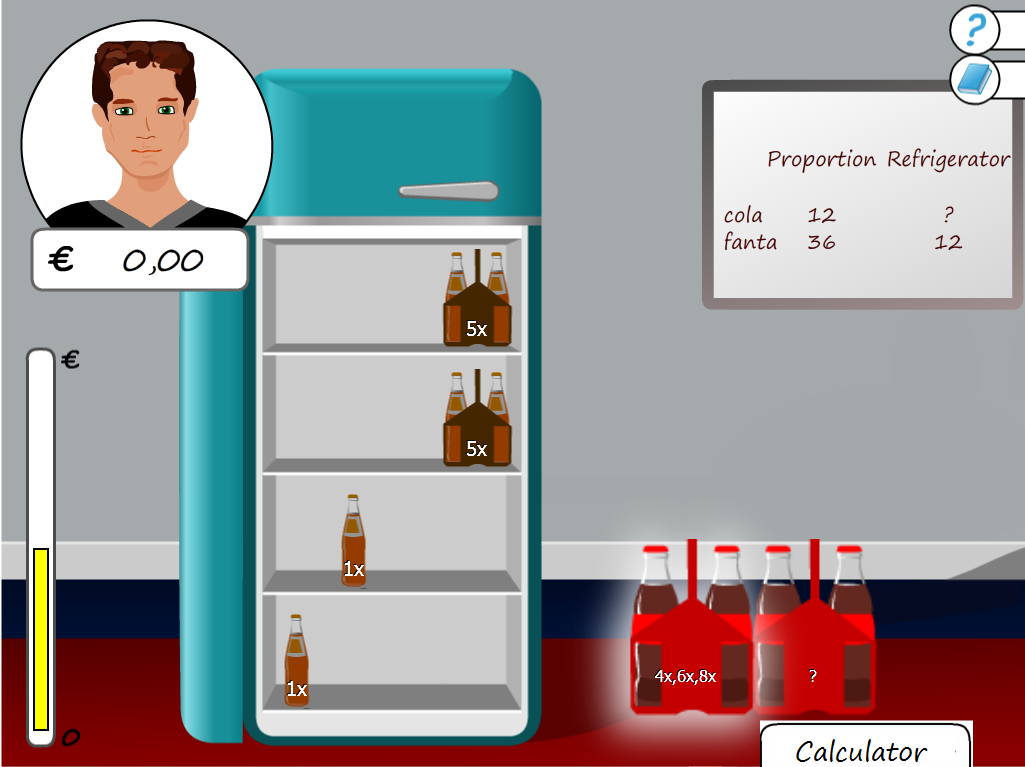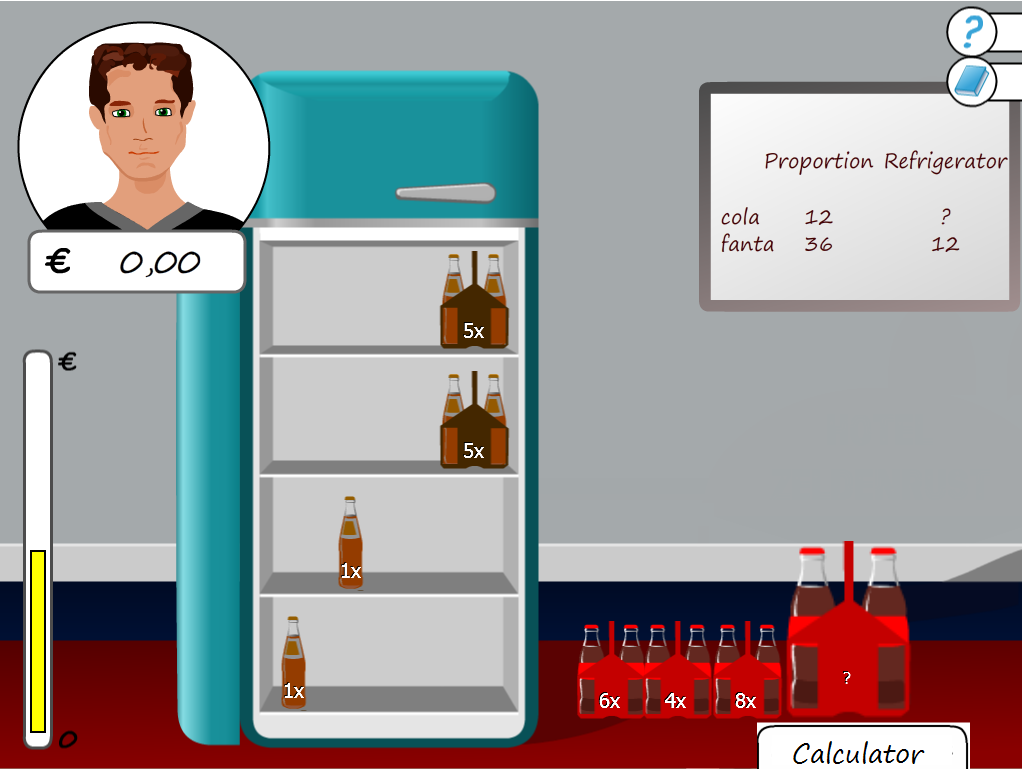Curiosity
Curiosity is regarded as a way to stimulate players to engage in cognitive explorative behavior. The curiosity version adopts an information gap theory perspective: the player is told that the problem in the game can be solved (the creation of an expectation), but in the game environment it is not immediately clear how the problem can be solved. The incongruency between what is told and what is experienced causes a cognitive conflict which in turn triggers (cognitive) explorative behavior.

Player only sees large crates with a question mark

Hovering with the mouse above the crate reveals the content. Clicking makes smaller crates available that can be used to solve the problem
Play the Curiosity version
Wouters, P., van Oostendorp, H., ter Vrugte, J., Vandercruysse, S., de Jong, T., & Elen, J. (2015). The role of curiosity‐triggering events in game‐based learning for mathematics. In J. Torbeyns, E. Lehtinen & J. Elen (Eds.), Describing and Studying Domain‐Specific Serious Games (pp. 191-207). New York, NY: Springer.
